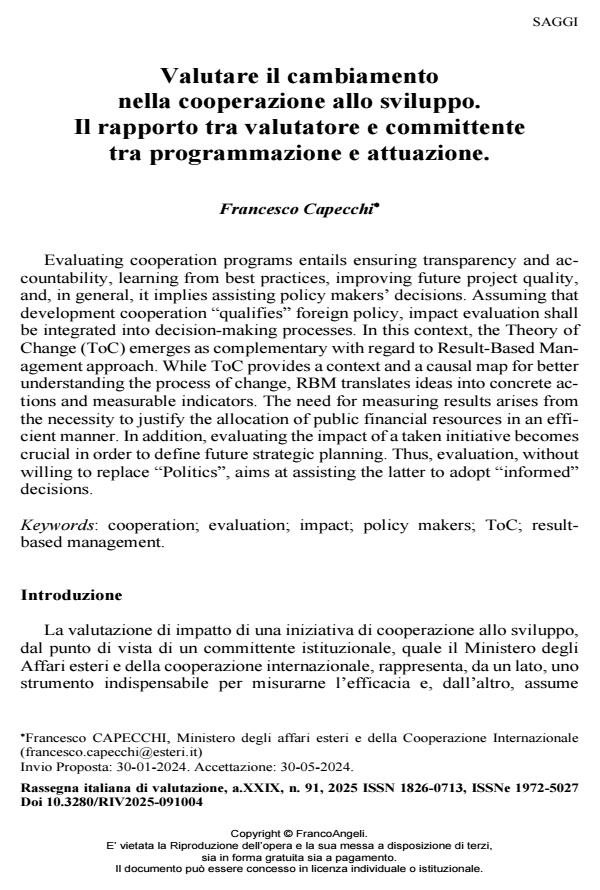Valutare il cambiamento nella cooperazione allo sviluppo. Il rapporto tra valutatore e committente tra programmazione e attuazione.
Journal title RIV Rassegna Italiana di Valutazione
Author/s Francesco Capecchi
Publishing Year 2025 Issue 2025/91
Language Italian Pages 20 P. 48-67 File size 750 KB
DOI 10.3280/RIV2025-091004
DOI is like a bar code for intellectual property: to have more infomation
click here
Below, you can see the article first page
If you want to buy this article in PDF format, you can do it, following the instructions to buy download credits

FrancoAngeli is member of Publishers International Linking Association, Inc (PILA), a not-for-profit association which run the CrossRef service enabling links to and from online scholarly content.
Evaluating cooperation programs entails ensuring transparency and accountability, learning from best practices, improving future project quality, and, in general, it implies assisting policy makers’ decisions. Assuming that development cooperation “qualifies” foreign policy, impact evaluation shall be integrated into decision-making processes. In this context, the Theory of Change (ToC) emerges as complementary with regard to Result-Based Management approach. While ToC provides a context and a causal map for better understanding the process of change, RBM translates ideas into concrete actions and measurable indicators. The need for measuring results arises from the necessity to justify the allocation of public financial resources in an efficient manner. In addition, evaluating the impact of a taken initiative becomes crucial in order to define future strategic planning. Thus, evaluation, without willing to replace “Politics”, aims at assisting the latter to adopt “informed” decisions.
Keywords: cooperation; evaluation; impact; policy makers; ToC; resultbased management.
Francesco Capecchi, Valutare il cambiamento nella cooperazione allo sviluppo. Il rapporto tra valutatore e committente tra programmazione e attuazione. in "RIV Rassegna Italiana di Valutazione" 91/2025, pp 48-67, DOI: 10.3280/RIV2025-091004